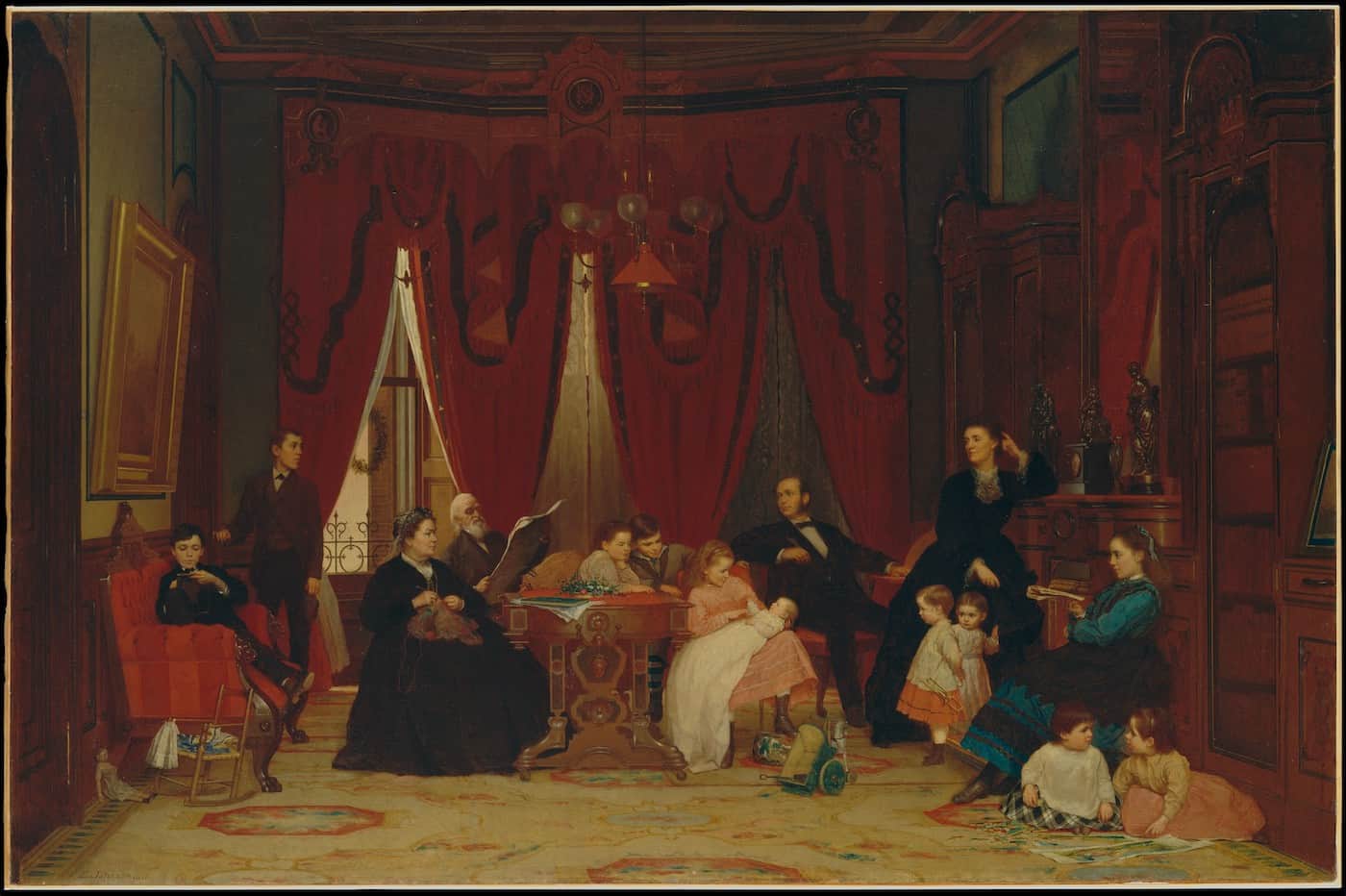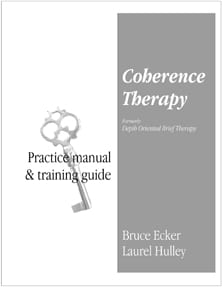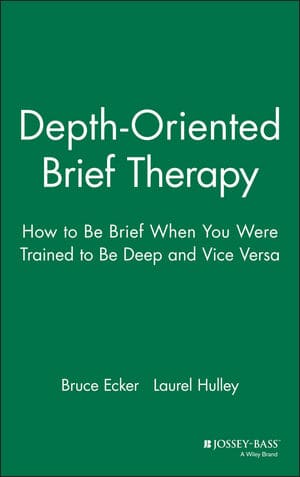Therapy
Coherence Therapy: Description, Effectiveness, and Benefits
THC Editorial Team July 1, 2022

Contents
- Overview
- What Is Coherence Therapy?
- How Does Coherence Therapy Work?
- Conditions Commonly Treated by Coherence Therapy
- The Potential Benefits and Effectiveness of Coherence Therapy
- Summary/Key Takeaways
Coherence therapy, formerly known as depth-oriented brief therapy (DOBT), is a type of psychotherapy that derives from depth psychology, which refers to the study of the unconscious aspects of the human experience.1 Practitioners of coherence therapy believe that the conscious and unconscious parts of the mind have essential roles in a person’s psychological well-being. The treatment is based on neurobiological principles and constructivist theory (i.e., the theory that people construct their own knowledge) and is used to address a broad range of concerns. Coherence therapy is brief and might last for only a few sessions. It is designed to help people quickly get to the root of their beliefs to address the underlying causes of their symptoms and the issues that have led them to seek therapeutic intervention.
What Is Coherence Therapy?
Coherence therapy is based on the theory that behavioral, cognitive, and emotional symptoms are connected to the individual’s internal models of reality. It was initially developed by psychologists Bruce Ecker and Laurel Hulley during the mid-1990s and is recognized as an effective type of constructivist psychotherapy.2
Coherence therapy is based on the idea of symptom coherence, the view that individual responses are expressions of people’s personal schemas. Schemas are somatic (bodily), emotional, and nonverbal constructs through which people perceive the world. Therapists view clients’ symptoms as originating from their constructs. The idea of symptom coherence holds that an individual’s seemingly irrational symptoms are actually sensible expressions of their existing constructs about themselves and the world around them instead of indicative of pathology. Through this therapeutic lens, resistance to treatment is viewed as something that can be used to aid the psychotherapeutic process instead of as a hindrance.
According to its founders, the goal of coherence therapy is the “transformation of the minimum amount of underlying material needed for ending unwanted patterns of mood, thought and behavior (‘symptoms’).”3 Coherence therapy is designed to help people achieve positive change through an examination of both their symptoms and the underlying causes. Because of its design, it can be beneficial for treating a broad range of mental health and emotional concerns.
Practitioners of coherence therapy use multiple strategies and techniques to help people alter their beliefs about a specific issue or symptom. This approach aims to foster long-term transformation related to their concern in a focused, expedient way.
How Does Coherence Therapy Work?
Coherence therapists aim to help clients use the innate resources they have within themselves to identify and dispel the personal schemas they have formed that contribute to these problematic symptoms. Many of these schemas, or emotional truths, are believed to have been created in childhood. When an individual starts coherence therapy, the therapist will begin by encouraging the client to bring awareness to areas within themselves and their lives that contribute to their symptoms. The therapist will work to help the client identify the symptoms that play an important function and those that are no longer necessary in a client’s life. Many symptoms are believed to originate from the individual’s unconscious attempt at self-preservation. Both functional and unhelpful symptoms are viewed as being coherent to the person’s psychological makeup.
Through coherence empathy, or “empathy towards the emotional truth of the symptom,” the therapist respectfully empathizes with the client’s need to have had the symptom.3 Therapists work to connect empathetically to clients and strive to facilitate positive therapeutic outcomes quickly. Through therapy, a person might experience a transformative change in just a few sessions, contrary to what they might expect from other forms of psychotherapy.
The coherence therapist serves an educational role and teaches clients to differentiate between their functional symptoms and those that are unnecessary. The therapist works with the person to identify and replace functionless symptoms and gives them the tools to continue doing this without therapeutic help. The therapist helps clients replace negative, underlying constructs with more positive constructs by assisting them in creating different experiences from what the clients remember. This replacement helps individuals unlearn the negative experiences through juxtaposition.
Coherence Therapy Methodology
The methodology of coherence therapy includes the following:3
Prerequisite: Empathize with the client’s challenge in facing their presenting symptom.
- Create discovery experiences (also known as radical inquiry): The therapist experientially aims to learn more about the client’s presenting symptom and the related core schemas. In this phase, the pro-symptom position may become apparent to the therapist, but often, not yet to the client.
- Create integration experiences (also known as position work): In this phase, through the therapist’s assistance, the client becomes more aware and conscious of their pro-symptom position and begins to relate to their problems from and within the pro-symptom position. At this stage, there is no attempt to change the symptom or the pro-symptom position.
- Create transformation experiences: In this stage, ideally, the client’s pro-symptom position begins to be changed or removed altogether. Experientially, and through memory reconsolidation, the client’s emotional schema shifts to where the presenting symptom is no longer necessary for their experience.
Conditions Commonly Treated by Coherence Therapy
Coherence therapy can be used to treat families, couples, and individuals experiencing a broad range of concerns. Some of the conditions that are commonly treated with coherence therapy include the following:1
- excessive drinking
- depression
- family conflict
- attachment disorders
- posttraumatic stress disorder (PTSD) and complex trauma
- body image problems
- agoraphobia
- shame
- guilt
- self-esteem issues
- anxiety
- codependency
- avoidance of intimacy
- sexual challenges
- underachievement
- perfectionism
The Potential Benefits and Effectiveness of Coherence Therapy
A few studies have examined the effectiveness of coherence therapy for various issues. Researchers have found that coherence therapy can be effective in helping people dealing with compulsive drinking, for example.4
A 2021 study found that coherence therapy can help adolescents with negative body image issues. The researchers studied 84 participants who scored low on an assessment of body image and randomly assigned them to control, coherence therapy, and another type of therapy—mode deactivation support—groups. Those who received coherence therapy showed the highest increase in self-acceptance posttreatment compared to those who received mode deactivation support or were placed in the control group.5
Coherence therapy has also been found to show promise in the treatment of compulsive eating.6 Additionally, researchers have found that coherence therapy can increase resiliency among individuals with multiple sclerosis.7 Case studies of people treated with coherence therapy have also shown that it can be an effective intervention for people with depression.8
Finally, a 2011 study found that compared to a self-help bibliotherapy initiative, coherence therapy was superior in improving challenges with perfectionism.9
Summary/Key Takeaways
Coherence therapy is based on the belief that people can achieve lasting changes in their perceptions and beliefs, and their impact on their emotions, by examining their underlying beliefs and replacing negative or detrimental ones. People who want to achieve results quickly might consider coherence therapy due to its brief course. Since the success of this therapy depends on the therapist’s ability to empathize with the client, people considering this approach should be careful when searching for a practitioner and look for one who is experienced in using coherence therapy in their practice. While some studies have been conducted on the effectiveness of coherence therapy, more research should be completed on its effectiveness as a treatment for various conditions.

















